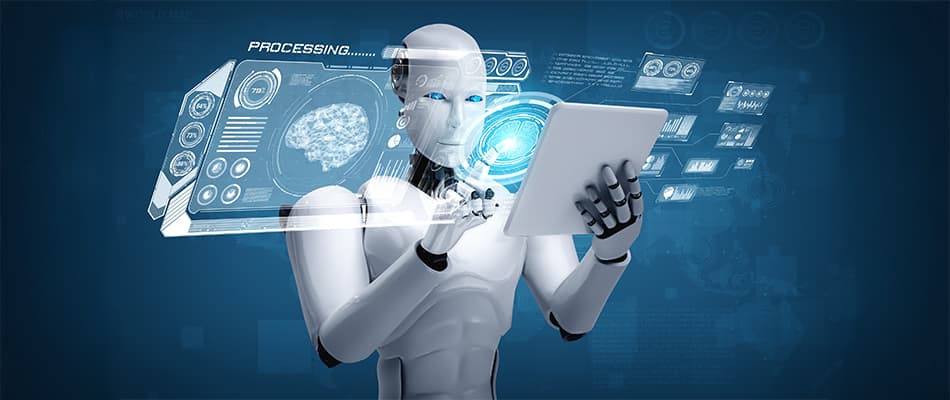40 Most Asked Interview Questions for Junior Data Scientists
Becoming a junior data scientist can be exciting and can also be a challenging decision. The need for qualified data scientists is only going to increase as businesses depend ever more on data before making any decision. Junior data scientists play a critical part in this process through their assistance with data analysis, creation of prediction models, and extraction of insightful information from intricate datasets. You must use your knowledge realistically and have a firm grasp of essential concepts to succeed as a junior data scientist.
To help you prepare for your junior data scientist interview, we have put together a list of 40 frequently asked interview questions and answers in this post. From fundamental statistics and programming abilities to machine learning algorithms and data visualisation methods, these questions cover an extensive range of subjects. If you go through these questions, you will be more prepared to demonstrate your abilities and expertise during the interview process.
1) What is the difference between data analytics and data science?
Answer: Data analytics is like being a detective, focusing on examining existing data to find patterns and insights that help make informed decisions. It’s more about interpreting data to generate actionable insights. Data science, on the other hand, is broader and involves creating algorithms, predictive models, and new ways to collect and analyse data. It includes data analytics but also involves more advanced skills like programming, machine learning, and statistical modelling to predict future trends and uncover new opportunities. Essentially, data analytics is a part of the larger field of data science.
2) How would you approach detecting a pattern in a batch of data?
Answer: When it comes to spotting a trend in a set of data, You can always begin by reviewing the summary statistics. This includes determining each variable’s mean, median, and mode, as well as the variance and standard deviation. This offers an overall picture of what the data looks like and helps you to decide where to focus your attention.
3) Which programming languages are commonly used for the junior data science profession?
Answer: For junior data science professionals, the most commonly used programming languages are Python and R. Python is popular due to its readability, extensive libraries like pandas, NumPy, and scikit-learn, and its versatility in handling various data science tasks. R is favored for its statistical analysis capabilities and data visualization tools like ggplot2. Additionally, SQL is crucial for database management, and learning a bit of SQL can greatly enhance your ability to work with large datasets. Starting with Python and SQL will give you a strong foundation in data science.
4) What is the purpose of the Pandas library in Python?
Answer: Pandas is a super handy library for data manipulation and analysis. It can handle data in all sorts of formats, like CSV files and SQL databases. With Pandas, you can easily filter, group, merge, and reshape your data, making those tasks way more efficient and straightforward. It’s an essential tool for prepping your data and doing exploratory analysis.
5) How do you handle missing data in a dataset?
Answer: You can handle missing data by removing records with missing values, imputing missing values using statistical methods, or using algorithms that support missing data. Removing data is straightforward but can lead to loss of valuable information. Imputation involves replacing missing values with mean, median, mode, or predicted values. Advanced techniques like K-nearest neighbours or regression imputation can also be used. Choosing the right method depends on the dataset and the problem at hand.
6) Explain the concept of Exploratory Data Analysis (EDA).
Answer: EDA involves analysing the main characteristics of a dataset, often with visual methods. You use EDA to summarise the data, find patterns, detect anomalies, and test hypotheses. It helps in understanding the dataset better before applying machine learning models. Visual tools like histograms, scatter plots, and box plots are commonly used in EDA. Performing EDA ensures that you make informed decisions during the data analysis process.
7) What is a histogram, and when do you use it?
Answer: A histogram is a graphical representation of the distribution of numerical data. You use it to understand the frequency distribution of a dataset and identify the central tendency, variability, and skewness. It helps in visualising how data points are distributed across different intervals. Histograms are particularly useful for detecting patterns and outliers in continuous data. They are commonly used in EDA to get a quick overview of the data.
8) How do you create a scatter plot in Matplotlib?
Answer: You can create a scatter plot in Matplotlib using the scatter() function, where you pass the x and y coordinates of the data points. This helps you visualise the relationship between two continuous variables. Customisation options allow you to adjust colours, labels, and other aesthetics. Scatter plots are useful for identifying correlations, trends, and outliers. They provide a clear view of how two variables interact.
9) What is the Seaborn library used for?
Answer: Seaborn is a data visualisation library based on Matplotlib. You use it to create attractive and informative statistical graphics. It provides high-level functions for drawing different types of plots and includes tools for enhancing Matplotlib visualisations. Seaborn’s default styles and colour palettes make it easy to produce visually appealing plots. It is particularly useful for visualising complex datasets.
10) What is the purpose of machine learning in data science?
Answer: Machine learning allows you to build models that can learn from data and make predictions or decisions without being explicitly programmed. It is essential for tasks like classification, regression, clustering, and recommendation systems. By using machine learning, you can automate data analysis and uncover too complex patterns for traditional statistical methods. Machine learning enhances the capability of data science to handle large and complex datasets. It is crucial for developing intelligent systems that can adapt and improve over time.
11) Describe the concept of overfitting and how to prevent it.
Answer: Overfitting occurs when a model learns noise in the training data instead of the underlying pattern. You can prevent it by using techniques like cross-validation, regularisation, and pruning. Overfitting leads to poor performance on unseen data. Cross-validation helps in assessing the model’s generalisation ability. Regularisation methods like L1 and L2 penalise large coefficients, while pruning reduces the complexity of decision trees.
12) What is cross-validation, and why is it used?
Answer: Cross-validation is a technique for evaluating model performance by splitting the data into training and validation sets multiple times. You use it to ensure that the model performs well on unseen data. It helps in detecting overfitting and provides a more accurate estimate of model performance. The most common method is k-fold cross-validation. It divides the data into k subsets, trains the model k times, each time using a different subset as the validation set.
13) Explain the difference between linear regression and logistic regression.
Answer: Linear regression is used for predicting continuous outcomes, while logistic regression is used for binary classification problems. You use logistic regression to predict probabilities and make binary decisions. Linear regression fits a line to the data to predict a numeric value. Logistic regression outputs a value between 0 and 1, which you can interpret as a probability. Both are fundamental techniques in predictive modelling.
14) What is the purpose of the train_test_split function in Scikit-learn?
Answer: The train_test_split is referred as a function that splits your dataset into training and testing sets. You use it to evaluate the performance of your machine-learning models on unseen data. Splitting the data helps assess how well the model generalises to new data and ensures that the model is not overfitted to the training set. The function allows you to specify the proportion of data to be used for training and testing.
15) How do you evaluate the performance of a classification model?
Answer: You evaluate a classification model using metrics like accuracy, precision, recall, F1 score, and ROC-AUC. These metrics help you understand the model’s performance in different aspects. Accuracy measures the overall correctness, while precision and recall focus on positive predictions. The F1 score balances precision and recall. ROC-AUC assesses the trade-off between true positive and false positive rates.
16) What is the confusion matrix, and why is it useful?
Answer: A confusion matrix is a table used to evaluate the performance of a classification model. It helps you understand the number of true positives, true negatives, false positives, and false negatives. It provides a detailed breakdown of the model’s predictions. From the confusion matrix, you can calculate metrics like accuracy, precision, recall, and F1 score. It helps you understand the types of errors the model makes.
17) Explain the concept of precision and recall.
Answer: Precision is the ratio of true positives to the sum of true and false positives. Recall is the ratio of true positives to the sum of true positives and false negatives. You use precision to measure the accuracy of positive predictions. Recall measures the completeness of positive predictions. Both metrics are important for evaluating classification models, especially in imbalanced datasets.
18) Explain the difference between supervised and unsupervised learning.
Answer: In supervised learning, you train models on labelled data where the outcome is known. You use it for tasks such as classification and regression. Unsupervised learning, on the other hand, deals with unlabeled data, aiming to find hidden patterns or intrinsic structures. In simple words, it can be explained such as:
- Supervised learning is like having a teacher: you train your model with labeled data, so it learns the right answers from examples.
- Unsupervised learning is more independent: the model works with unlabeled data and tries to find hidden patterns or groupings on its own.
- Think of supervised learning as having a study guide, while unsupervised learning is more like exploring without a map.
- Both are essential in machine learning, but they’re used for different types of problem
19) What is the F1 score, and how is it calculated?
Answer: The F1 score is the harmonic mean of precision and recall. You calculate it as 2 * (precision * recall) / (precision + recall) to balance the trade-off between precision and recall. This score is particularly useful when you need to balance both metrics. It ranges from 0 to 1, with 1 indicating perfect precision and recall. It helps assess the classification model’s overall performance.
20) How do you handle categorical data in machine learning?
Answer: You handle categorical data by encoding it into numerical values using techniques like one-hot encoding, label encoding, or ordinal encoding. One-hot encoding creates binary columns for each category, while label encoding assigns a unique integer to each category. The choice of encoding method depends on the algorithm you are using. Proper encoding ensures that the model can interpret the categorical variables correctly. It helps in improving the model’s performance.
21) What is feature scaling, and its importance?
Answer: Feature scaling involves normalising or standardising numerical features to bring them to a common scale. You use it to improve the performance and convergence of machine learning algorithms. Scaling is particularly important for algorithms that rely on distance calculations, like K-nearest neighbours and support vector machines. Standardisation scales the data to have a mean of 0 and a standard deviation of 1. Normalisation scales the data to a range of [0, 1] or [-1, 1].
22) Describe the K-means clustering algorithm.
Answer: K-means clustering is an unsupervised learning algorithm used to partition data into K clusters. You specify the number of clusters, and the algorithm assigns each point to the nearest cluster centroid. It iteratively updates the centroids and reassigns points until convergence. K-means is simple and efficient for large datasets. It is commonly used for market segmentation, image compression, and anomaly detection.
23) What is the purpose of the elbow method in K-means clustering?
Answer: The elbow method helps you determine the optimal number of clusters (K) in K-means clustering. You plot the within-cluster sum of squares against the number of clusters and look for an “elbow” point where the rate of decrease slows down. This point indicates the optimal number of clusters. It helps in balancing the trade-off between the complexity of the model and the accuracy of clustering. The elbow method is a visual tool to select the right number of clusters.
24) How do you implement a decision tree classifier in Scikit-learn?
Answer: You implement a decision tree classifier using the Decision Tree Classifier class in Scikit-learn. You fit the model to the training data and use it to make predictions on new data. The decision tree splits the data into branches based on feature values. It is easy to interpret and visualise. You can evaluate the model’s performance using metrics like accuracy, precision, and recall.
25) Explain the concept of random forests.
Answer: Random forests are an ensemble learning method that combines multiple decision trees to improve performance. You use random forests to reduce overfitting and increase the accuracy of your predictions. Each tree is built on a random subset of data and features. The final prediction is the majority vote or average of the trees’ predictions. Random forests are robust to noise and handle large datasets well.
26) What is the purpose of hyperparameter tuning in machine learning?
Answer: Hyperparameter tuning involves selecting the best hyperparameters for a machine-learning model. To optimise model performance, you use techniques like grid search and random search. Grid search exhaustively searches over a specified parameter grid, while random search samples parameter combinations randomly. Proper hyperparameter tuning can significantly improve the accuracy and generalisation of the model and ensure that it performs well on new data.
27) How do you use Grid Search CV in Scikit-learn?
Answer: Grid Search CV performs an exhaustive search over a specified parameter grid to find the best combination. You use it to automate the process of hyperparameter tuning. It splits the data into training and validation sets, evaluates the model for each parameter combination, and selects the best one. Grid Search CV helps in improving model performance and avoiding manual tuning. It is a powerful tool for finding the optimal hyperparameters.
28) What is regularisation, and why is it important?
Regularisation adds a penalty to the model’s complexity to prevent overfitting. You use techniques like L1 (Lasso) and L2 (Ridge) regularisation to shrink model coefficients. L1 regularisation promotes sparsity by setting some coefficients to zero. L2 regularisation prevents large coefficients and improves stability. Regularisation helps in creating simpler and more generalisable models.
29) What is the difference between L1 and L2 regularisation?
Answer: L1 regularisation (Lasso) adds an absolute value penalty to the model’s coefficients, promoting sparsity. L2 regularisation (Ridge) adds a squared penalty, preventing large coefficients. L1 can be used for feature selection, as it sets some coefficients to zero. L2 improves model stability by preventing coefficients from growing too large. Both methods help in reducing overfitting.
30) How do you implement logistic regression in Scikit-learn?
Answer: You implement logistic regression using the LogisticRegression class in Scikit-learn. You fit the model to the training data and use it to make predictions on new data. Logistic regression is used for binary classification tasks. The model outputs probabilities that can be converted to class labels. You can also evaluate its performance using metrics like accuracy, precision, and recall.
31) What is the purpose of the ROC curve in model evaluation?
Answer: The ROC curve plots the true positive rate against the false positive rate at various threshold levels. You use it to evaluate the trade-off between sensitivity and specificity. The area under the ROC curve (AUC) provides a single measure of model performance. A higher AUC indicates better performance. The ROC curve helps compare different models and select the best one.
32) Explain the concept of precision and recall.
Answer: Precision is the ratio of true positives to the sum of true and false positives. Recall is the ratio of true positives to the sum of true positives and false negatives. You use precision to measure the accuracy of positive predictions. Recall measures the completeness of positive predictions. Both metrics are important for evaluating classification models, especially in imbalanced datasets.
33) How do you handle imbalanced datasets in machine learning?
Answer: You handle imbalanced datasets using techniques like resampling, synthetic data generation (SMOTE), and using performance metrics that account for imbalance (e.g., F1 score). Resampling involves over-sampling the minority class or under-sampling the majority class. SMOTE generates synthetic samples for the minority class. Proper handling of imbalanced data ensures that the model does not bias towards the majority class. It helps in improving the model’s accuracy and fairness.
34) What is a confusion matrix?
Answer: A confusion matrix is a table that summarises the performance of a classification model. You use it to show the true positives, true negatives, false positives, and false negatives. It provides a detailed breakdown of the model’s predictions. From the confusion matrix, you can calculate metrics like accuracy, precision, recall, and F1 score. It helps understand the types of errors the model makes.
35) Describe the concept of a neural network.
Answer: A neural network is a computational model inspired by the human brain. You use it to learn patterns from data through layers of interconnected nodes (neurons). Each node performs a weighted sum of inputs and passes it through an activation function. Neural networks are used for tasks like image recognition, natural language processing, and time series prediction. They can model complex, non-linear relationships.
36) What is the difference between a convolutional neural network (CNN) and a recurrent neural network (RNN)?
Answer: CNNs are used for image and spatial data analysis, focusing on local patterns. RNNs, such as time series or natural language, are used for sequential data analysis by maintaining context through hidden states. CNNs use convolutional layers to capture spatial hierarchies. RNNs use loops to process sequences of data. Both are specialised architectures for different types of data.
37) How do you implement a neural network in Python?
Answer: You can implement a neural network using libraries like TensorFlow or Keras. You define the network architecture, compile the model, and train it on data. These libraries provide high-level APIs to simplify the process. You specify layers, activation functions, and optimisation algorithms. After training, you can evaluate and fine-tune the model to improve performance.
38) What is the purpose of the activation function in a neural network?
Answer: The activation function introduces non-linearity to the model, allowing it to learn complex patterns. You use functions like ReLU, sigmoid, and tanh. The choice of activation function affects the model’s performance and training process. ReLU is commonly used for hidden layers, while sigmoid and tanh are used for output layers in classification tasks. Non-linear activation functions enable the network to approximate any function.
39) Explain the concept of backpropagation.
Answer: Backpropagation is an algorithm used to train neural networks. You calculate the gradient of the loss function with respect to each weight and update the weights to minimise the loss. It involves a forward pass to compute predictions and a backward pass to calculate gradients. The gradients are propagated back through the network using the chain rule. Backpropagation helps in optimising the network to improve performance.
40) What is Bias in Data Science?
Bias is a type of inaccuracy that happens in a data science model when an algorithm is not powerful enough to capture the underlying patterns or trends in the data. Consider bias in a data science model as training a computer to recognise cats from photographs. If it is unfamiliar with all of the different shapes and colours that cats can have, it may misidentify dogs as cats or fail to recognise some.
In-Demand Junior Data Scientist Job Profile
The role of a junior data scientist is becoming increasingly crucial in today’s data-centric world. Junior data scientists support data analysis, build initial predictive models, and extract insights from complex datasets. They typically work under the guidance of senior data scientists and analysts, contributing to projects that involve data cleaning, exploratory data analysis, and basic machine learning model development. With businesses relying more on data to drive decisions, junior data scientists play a vital role in helping organisations harness the power of their data.
It is also important to note that having strong analytical skills is an advantage. Junior data scientists need a solid foundation in programming languages like Python or R, as well as familiarity with data manipulation and visualisation tools. Communication skills are also important, as junior data scientists often must present their findings to non-technical stakeholders. As demand for data-driven decision-making grows across industries, the role of a junior data scientist offers numerous opportunities for career advancement and professional development.
Why Join Digital Regenesys Junior Data Scientist Course?
Enrolling in the Digital Regenesys Junior Data Scientist Course can significantly boost your career prospects. This course is designed to equip you with the essential skills and knowledge needed to excel in the field of data science. You will gain hands-on experience with industry-standard tools and techniques, preparing you to tackle real-world data challenges confidently.
Benefits of the Digital Regenesys Junior Data Scientist Course:
- Comprehensive Curriculum
- Flexible Learning Options
- Practical Projects
- Expert Instructors
- Career Support
In conclusion, preparing for an interview as a junior data scientist involves a mix of technical and soft skills. Expect questions that test your understanding of fundamental concepts. Any individual should be ready to demonstrate their problem-solving abilities and how they approach data-driven decision-making. Showcasing your enthusiasm for continuous learning and your ability to communicate complex ideas clearly can set you apart as a promising candidate for a junior data scientist role. For more information on Data Science course anyone can visit Digital Regenesys.
Interview Questions for Junior Data Scientist – FAQs
What qualifications do I need to become a junior data scientist?
To become a junior data scientist, you typically need a bachelor’s degree in a related field such as mathematics, statistics, computer science, or engineering. A strong foundation in programming languages like Python or R and experience with data analysis and visualisation tools are also essential.
What are the main responsibilities of a junior data scientist?
As a junior data scientist, your main responsibilities include data cleaning and preprocessing, performing exploratory data analysis, building and evaluating initial machine learning models, and generating reports to communicate findings to stakeholders.
How important are communication skills for a junior data scientist?
Communication skills are crucial for a junior data scientist. You need to effectively present your findings to non-technical stakeholders, ensuring that insights are understood and can be acted upon by the business.
What tools and technologies should a junior data scientist be familiar with?
A junior data scientist should be familiar with tools like Python or R for programming, SQL for database querying, Pandas and NumPy for data manipulation, Matplotlib and Seaborn for data visualisation, and Scikit-learn for machine learning.
Can I transition to a junior data scientist role from a different career?
Yes, transitioning to a junior data scientist role from a different career is possible. Gaining relevant skills through online courses, certifications, and practical experience with data projects can help make the transition smoother. Networking and demonstrating your analytical skills in your current job can also provide a pathway to a junior data scientist position.














